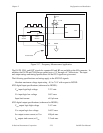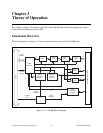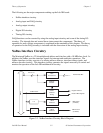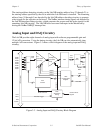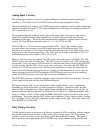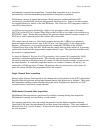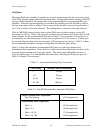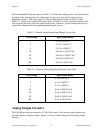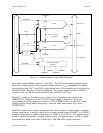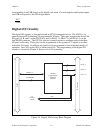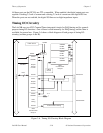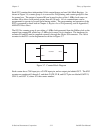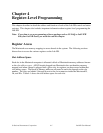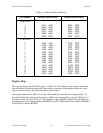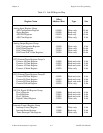
Chapter 3 Theory of Operation
© National Instruments Corporation 3-7 Lab-NB User Manual
The recommended DAQ rates given in Table 3-2 assume that voltage levels on all the channels
included in the scan sequence are within range for the given gain and are driven by low-
impedance sources. The signal ranges for the possible gains are shown in Table 3-3 and
Table 3-4. Signal levels outside the ranges shown in Table 3-3 on the channels included in the
scan sequence adversely affect the input settling time. Similarly, greater settling time may be
required for channels driven by high-impedance signal sources.
Table 3-3. Bipolar Analog Input Signal Range Versus Gain
Gain Setting Input Signal Range
1 -5 V to 4.99756 V
2 -2.5 V to 2.49878 V
5 -1.0 V to 0.99951 V
10 -500 mV to 499.756 mV
20 -250 mV to 249.877 mV
50 -100 mV to 99.951 mV
100 -50 mV to 49.975 mV
Table 3-4. Unipolar Analog Input Signal Range Versus Gain
Gain Setting Input Signal Range
1 0 V to 9.99756 V
2 0 V to 4.99878 V
5 0 V to 1.99951 V
10 0 mV to 999.756 mV
20 0 mV to 499.877 mV
50 0 mV to 199.951 mV
100 0 mV to 99.975 mV
Analog Output Circuitry
The Lab-NB provides two channels of 12-bit D/A output. Each analog output channel can
provide unipolar or bipolar output. Figure 3-4 shows a block diagram of the analog output
circuitry.



